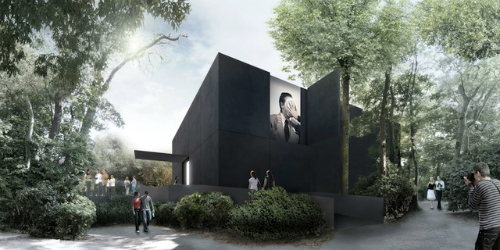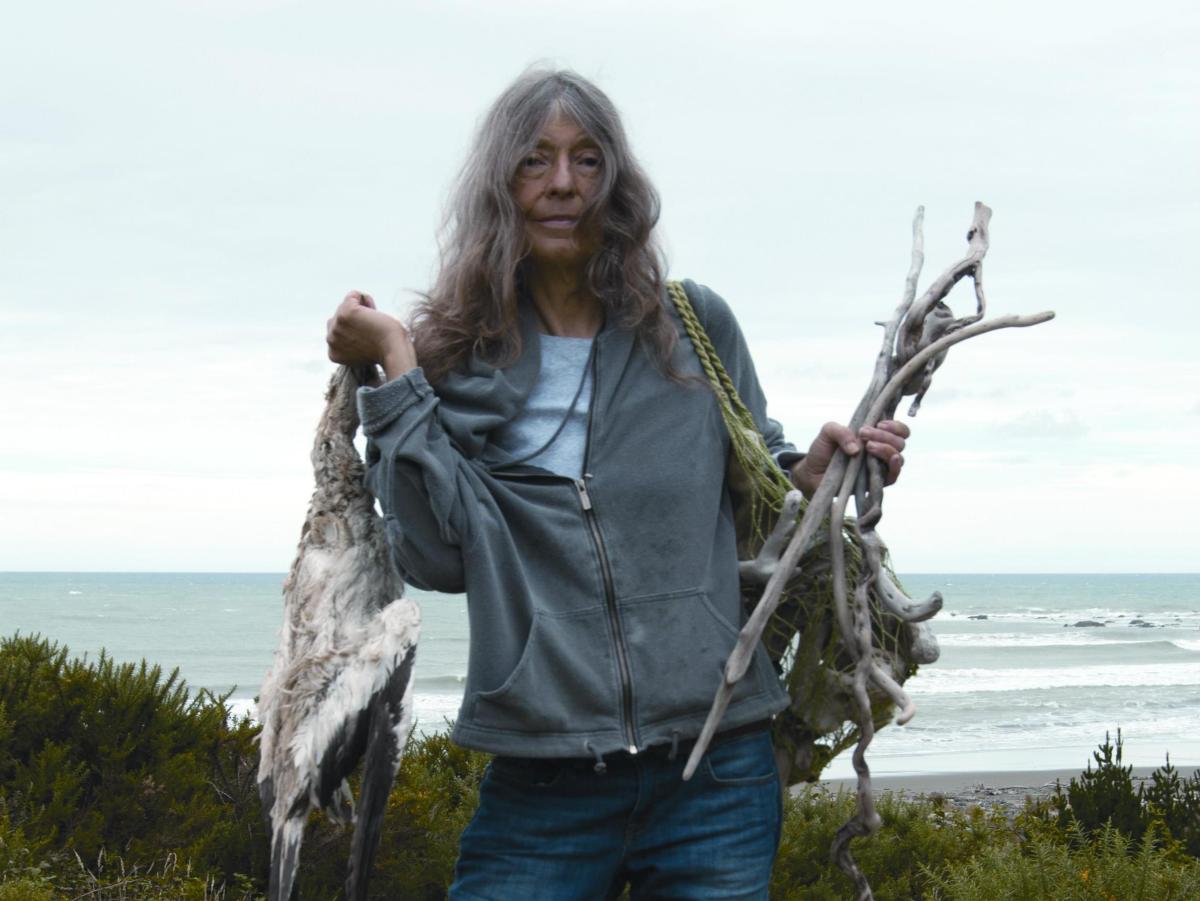Fiona Hall, detail of portrait by Natalie Robertson. Source: Australia Council for the Arts
As this year’s Venice Biennale wrapped up last week, the Australia Council for the Arts has taken the opportunity to keep the momentum rolling with the announcement of Fiona Hall AO to represent Australia at the 56th International Art Exhibition, Venice Biennale 2015.
Adelaide-based Hall will be the first artist to show in Australia’s new pavilion in the Giardini, designed by architects Denton Corker Marshall.
Invited by Commissioner Simon Mordant AM, who steps into the role for the second time, Hall said it was an easy decision to invite Linda Michael as curator of her Venice exhibition. Michael, who is Deputy Director and Senior Curator at Heide Museum of Modern Art, is no stranger to the task; she curated the pavilion in 2003 for the artist Patricia Piccinini.
Hall said, ‘I am really pleased and a bit relieved that Linda Michael has accepted my invitation to be the curator … she has got a sense of some of the emotive and political things that I have been trying to express in recent and current works.’
Hall’s most recent exhibition, Fiona Hall: Big Game Hunting was presented at Heide earlier this year.
Hall saw her first Venice Biennale this year, commenting, ‘The experience of being in Venice was exciting and it made me realise what a difficult and daunting gig Venice actually is, so I am mighty relieved that I have seen one.’
She added, ‘The difficulty in Venice will be not the pavilion, but all mine, to match the beautiful proportions of the pavilion and to put on an installation that I feel makes the grade, not just in the Venice context but for myself.’
Mordant as Commissioner also faces challenges on the path ahead, faced with the redevelopment of the new pavilion and the realisation of Hall’s exhibition.
He said, ‘There are two levels of challenge: the first is to complete the fundraising for both. The building we have raised $6.5 million [for] so far and will probably have to raise a little more. The tenders are out so we are not sure what the final costs will be, and then raising the $1 million for the program.’
‘The second challenge is building the pavilion. It is the first new pavilion built this century so there isn’t an embedded methodology in doing that. Then there is the challenge for the artist who doesn’t have the space’ physically to work with.

‘Fiona has been spending quite a bit of time at the Museum of Contemporary Art, as one of their new galleries, the big white box, is almost identical in size,’ said Mordant.
‘As soon as I saw it was a square I thought “fantastic”,’ said Hall. ‘There is something for me very pertinent about the square; I think the space is simple, proportionally wonderful and extremely versatile and I am feeling incredibly fortunate to not only be the first artist to show in that pavilion but to actually show in a space like that.’
Mordant said of Hall’s practice, ‘Her work is deeply thoughtful, insightful and engaging. I can’t wait to see the new works she will create for the exhibition in Venice.’
While we within the industry await to hear who receives this great honor every two years, the pinnacle of acknowledged success as an artist, we are perhaps less aware of the complexities to funding Australia’s representation and this two-year journey of preparation.
Mordant was happy to explain the funding structure for Venice. ‘Obviously we have a lot of staff on the ground for that whole seven months, the commissioning of the artist, the retention of a world class curator, the promotion of the exhibition – the cost of putting on the project is about $1.5 million for the program.’
‘The Australia Council funds about half a million,’ Mordant continued, ‘and as Commissioner my job is to raise the balance and I do that through philanthropic support. The Balnaves Foundation is our major supporter, and then I attract a small group of other corporate sponsors – Maddocks, who have been the longest serving supporter; the University of Melbourne; White Rabbit Gallery; and there will probably be one or two more in that category – that group will make up about 20-25% of the total.’
The last 20% is raised from the Commissioner’s Council of supporters and and balance from individual champions of the Biennale, calculated Mordant.
With any level of funding, public, corporate or private, comes accountability. Fiona Hall’s biography certainly affirms her choice as sound and, it could be offered, overdue. The other sure measure is attendance.
Australia Council Chair Rupert Myer AM said, ‘At this year’s Biennale, about 200,000 people visited the Australian Pavilion to see Simryn Gill’s work and I have no doubt Fiona Hall’s exhibition will also attract an impressive number.’
While the two artists share a sympathy in their making, and it is arguably unfortunate that they sit back-to-back, there is no doubt that Hall will present an impeccable and thought-provoking exhibition of which all Australians can be proud.
Hall added, ‘Every exhibition and every project you take on is daunting. It is a challenge to come up to the high hopes that you have when you set out to make work for an exhibition, so that is how I will approach Venice – put my head down and work very hard.’
Fiona Hall emerged as a photographer in the 1970s, turning to a more expansive use of materials in the 1980s. She has represented Australia in Biennales in Moscow (2009), dOCUMENTA (13) in Kassel Germany, the Biennale of Sydney (2010 and 2000), and her survey exhibition Fiona Hall: Force Field at the MCA (2008) toured to New Zealand. A humanistic relationship between nature and culture remains central to her work.
Since its inception in 1895, 36 Australian visual artists have exhibited at Venice, including Hany Armanious (2011), Ricky Swallow (2005), Howard Arkley (1999), Bill Henson (1995), and in 1997, Judy Watson, Yvonne Koolmatrie, and Emily Kame Kngwarreye. Australia is among just 29 countries to have been granted a permanent site in the gardens.
The 56th Venice Biennale will run from 9 May to 22 November 2015.





